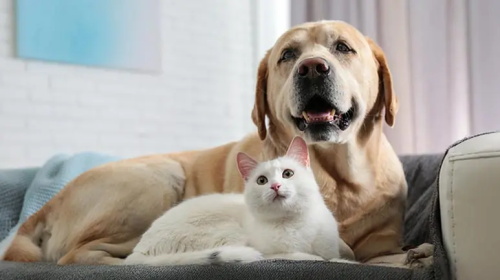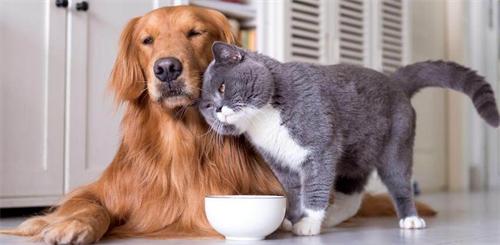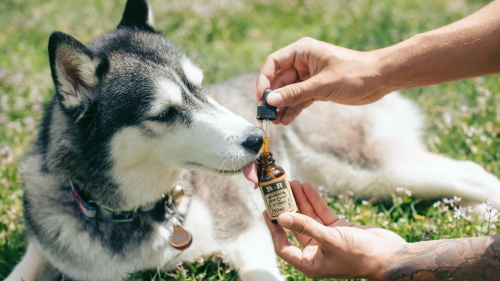Aging Pets: Best Care for Senior Dogs and Cats

Aging is a part of life—for us and our pets. As cats and dogs age, they begin to experience changes that may be easy to overlook at first but can significantly impact their comfort, well-being, and health. From joint stiffness to changes in appetite, sleep habits, sensory perception, and behavior, these changes are a natural evolutionary process—and they don't have to be painful. With thoughtful care, many of the challenges of aging can be alleviated, allowing our furry companions to enjoy a more peaceful and fulfilling twilight years.
Every animal is unique, and factors like breed, size, genetics, and lifestyle influence how they age. Small dogs tend to stay more active than large breeds, and cats can show subtle signs of aging even if their mental state appears unchanged. Identifying your pet's "senior" stage—not just by calculating age but also by observing their energy level, activity level, awareness, and comfort—can help you adjust their care more kindly and effectively. The right adjustments can not only extend lifespan but also improve quality of life.
Understanding the Meaning of "Senior"
"Senior" refers to the later stages of life for cats and dogs, but there's no fixed standard for when this occurs. Species, breed, size, genetics, previous health conditions, and lifestyle all play a role. For example, large dogs tend to reach seniority earlier than small ones. A Great Dane might be considered "senior" at 6 or 7 years old, while a Chihuahua might still be active at 20. For cats, many guidelines place seniority around 10 or 11 years old. Even so, a pet's "senior" status doesn't mean it's mentally old or unable to enjoy life—it simply means that some of its needs are changing.
Veterinary practices typically define senior pets based on life stages rather than a single age. A common definition is that a dog enters seniority when it's in the last 25% of its life expectancy. Therefore, the criteria for a small dog with a longer lifespan may differ from those for a large or giant breed with a shorter lifespan. For cats, many experts agree that seniority is 10 years or older. However, these are guidelines, not hard and fast rules. Most importantly, observe changes—such as slowness, changes in energy, stiffness, appetite, or behavior—that indicate a need to adjust the level of care.
Best Care for Senior Dogs and Cats
Once your pet enters senior years, care needs to be more proactive and personalized. Here are key practices every pet owner should follow.
1. More Frequent Veterinary Checkups
Annual checkups are no longer enough for senior pets. Scheduled checkups every six months allow your veterinarian to monitor for hidden changes in your pet through a physical exam, blood tests, and urine tests. Regular screenings can detect kidney disease, thyroid problems, and other issues before symptoms appear.
During these appointments, discuss dental care, joint health, weight management, and behavioral changes. Preventive care can provide your pet with many years of comfortable living.

2. Nutrition to Meet the Needs of Aging
As pets age, their dietary needs change dramatically.
Adjusting Calorie Intake: Senior dogs generally require fewer calories due to their lower activity levels, while senior cats may require more energy-dense foods to prevent muscle loss.
Prioritize high-quality protein: Protein helps maintain muscle mass, which naturally decreases with age. Choose lean, easily digestible food sources, such as chicken, fish, or eggs.
Support digestion: Senior pets can benefit from added fiber and easily digestible ingredients to prevent constipation and maintain gut health.
Focus on hydration: Cats, in particular, tend to drink less water as they age. Feeding wet food or adding water or broth to their food can help protect kidney function.
A veterinarian or veterinary nutritionist can help adjust your pet's diet based on blood tests and physical condition.
3. Pain Management and Mobility Support
Pain in pets is often overlooked—they rarely cry out. Instead, watch for subtle signs: slower movements, reluctance to climb stairs, or sleeping longer than usual.
Treatment may include anti-inflammatory medications, joint supplements (such as glucosamine and omega-3 fatty acids), or physical therapy. Some pets can improve their mobility with acupuncture or hydrotherapy.
At home, use ramps, non-slip mats, and soft, orthopedic beds to make movement easier. Raise food and water bowls to reduce neck strain. Small changes in the environment can significantly improve comfort.
4. Cognitive and Emotional Support
Like humans, pets' brains age. Maintaining mental stimulation can help slow cognitive decline.
Try food puzzles, gentle training sessions, scent play, or short walks with multiple routes. Cats may appreciate windowsill perches, new toys, or interactive feeders. Regular feeding and sleeping times are also important—they can help reduce confusion and anxiety.
If your pet experiences nighttime restlessness or disorientation, talk to your veterinarian about supplements or medications that can help improve brain function.
5. Maintaining Dental Health
Oral hygiene becomes increasingly important as your pet ages. Brush your pet's teeth regularly with pet-specific toothpaste and schedule professional cleanings as recommended.
Dental chews, mouthwashes, and specialized dry food can also help maintain oral health. Remember, untreated dental disease can lead to heart, liver, or kidney problems—so prevention is always worthwhile.

6. Weight Management and Exercise
Maintaining a healthy weight is one of the best ways to extend your pet's lifespan.
Encourage your pet to engage in low-impact exercise, such as jogging, swimming, or indoor playtime. Avoid strenuous exercise, especially for pets with arthritis, but don't stop exercising completely—exercise keeps joints lubricated and strengthens muscles.
Check your pet's physical condition regularly. You should be able to feel the ribs without pressing hard and see a slight waistline. Obesity and weakness are warning signs that dietary or exercise adjustments are needed.
7. Prevention and Supportive Care
Pets should continue to receive vaccinations, parasite prevention, and routine screenings as they age. Even if they spend more time indoors, fleas, ticks, and viruses can still pose a risk.
Consider supplements that promote longevity, such as omega-3 fatty acids for inflammation, antioxidants for cell health, or formulas for joint and cognitive function. Always consult your veterinarian before introducing new products.
8. Behavior and Emotional Health
Aging pets may become more dependent, anxious, or more sensitive to noise. Providing a stable schedule, a quiet environment, and plenty of affection can help maintain emotional stability.
If a pet suddenly becomes aggressive or withdrawn, this may indicate pain or confusion, rather than a personality change. Patience and comfort are crucial—aging can be disorienting for pets, and they rely on you for comfort and security.
Aging is an inevitable part of every pet's life journey, but it doesn't mean weakness or sadness. With the right knowledge, compassion, and proactive care, senior years can be a time of meaningful and connected connection between owner and pet. Whether through gentle exercise, targeted nutrition, regular veterinary visits, or simply more patience and love, even a little effort can bring immense comfort and joy to aging cats and dogs.
Caring for a senior pet also changes the way we think about companionship. It's no longer just about play and performance, but about being there—enjoying quiet moments, understanding their subtle cues, and returning the unconditional love they always offer. Every wag of their tail or gentle purr is a reminder of the wonderful life we share.
By recognizing the signs of aging early and tailoring care to their pets' changing needs, owners can help them maintain vitality, dignity, and peace. After all, our furry friends deserve the care and attention of gold.



